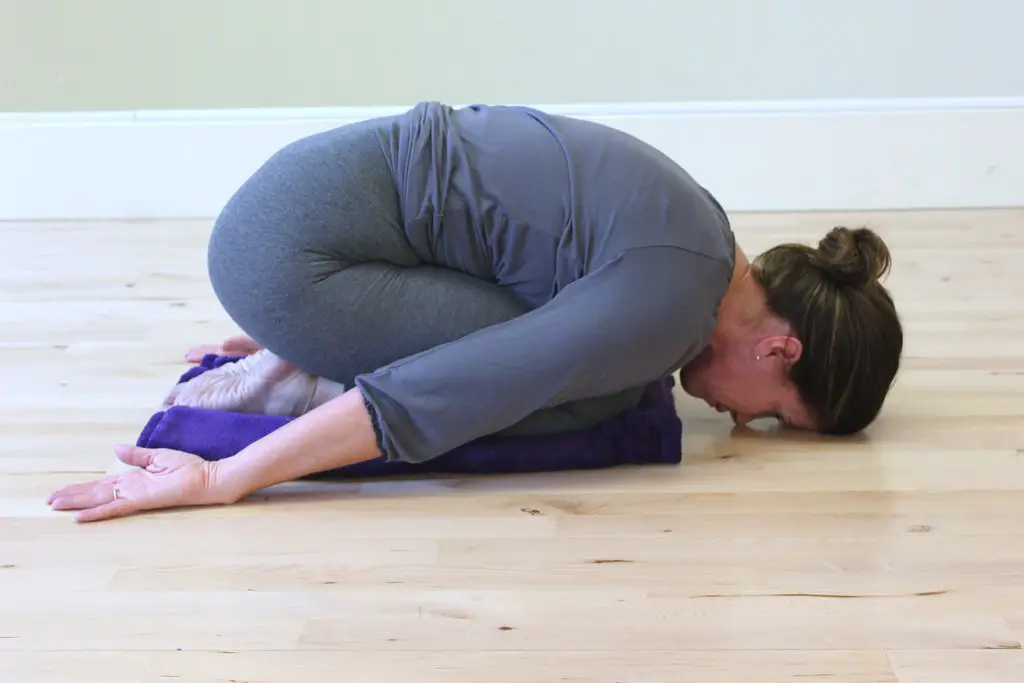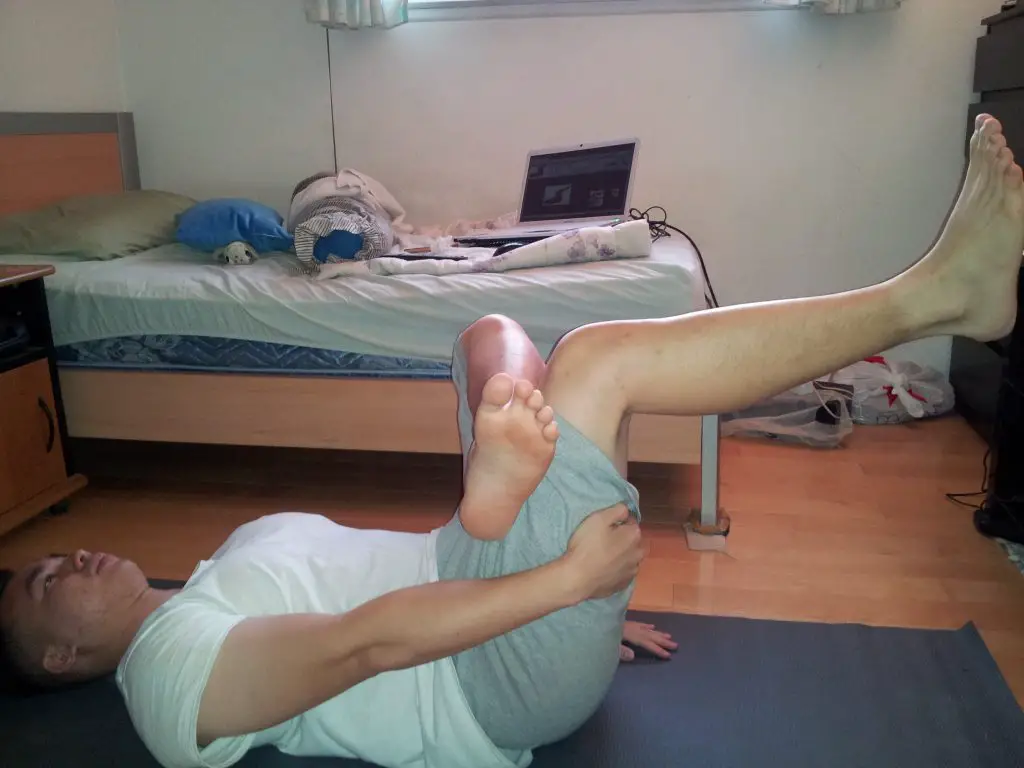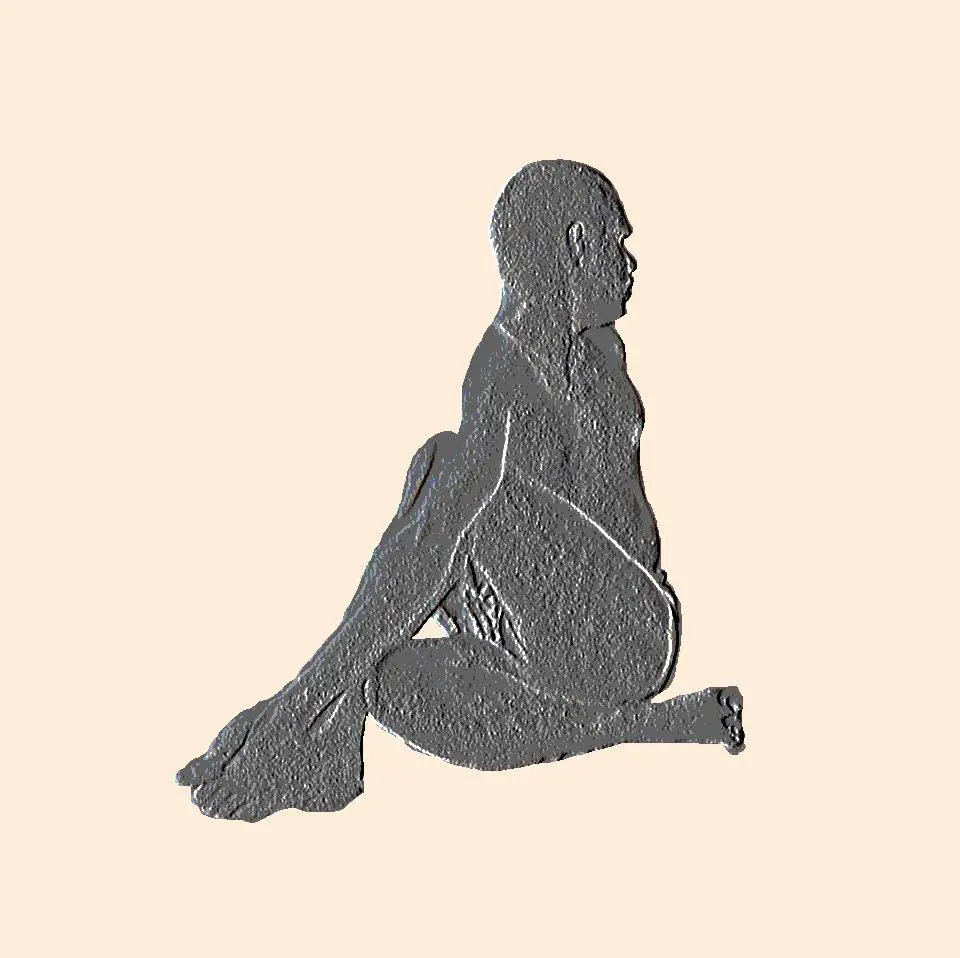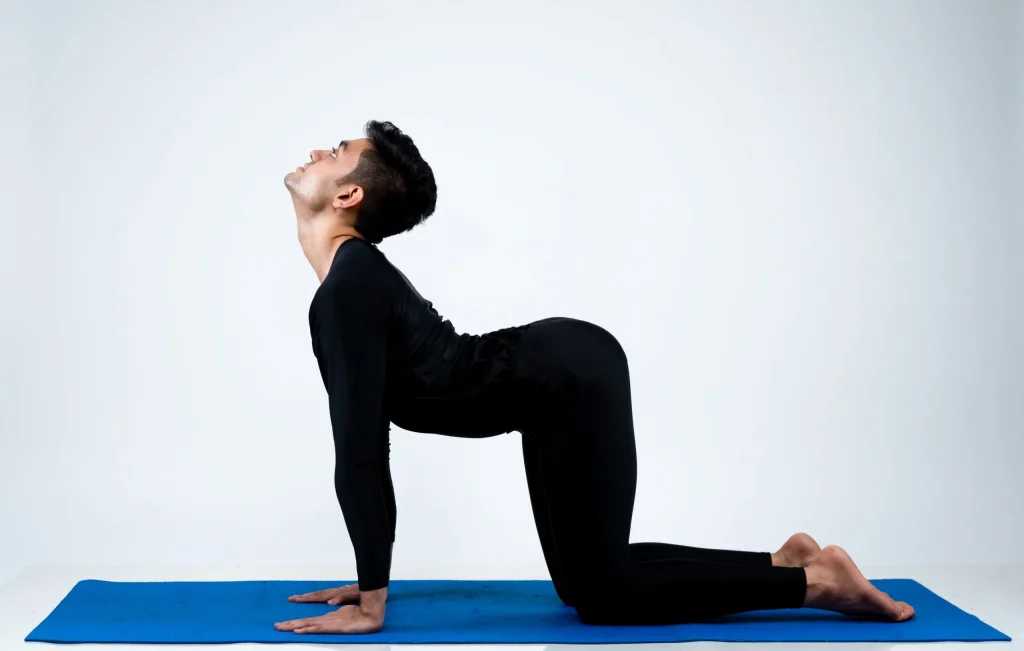So, if you’re looking for some relief from your lower back pain, be sure to add some exercise to your routine. And, to make things a little easier, we’ve put together a list of some of the best exercises for lower back pain relief.
Contents
Child’s Pose
Child’s Pose is a traditional yoga pose that is often used as a resting pose. It can be helpful in relieving back pain by stretching the front body and lengthening the spine. To do Child’s Pose, start on all fours with your hands and knees on the ground. As you exhale, lower your buttocks back toward your heels and stretch your arms out in front of you. You can rest your forehead on the ground or on a block if it doesn’t reach you. Hold this pose for several breaths then return to all fours and repeat as needed.

This pose stretches the muscles along the front of the body including the pectoralis major, latissimus dorsi, and abdominal muscles. It also stretches the hips, thighs, and ankles. The gluteus maximus and hamstrings are also stretched as they work to support the body in this position. In addition to stretching these muscles, Child’s Pose also helps to lengthen the spine and release tension in the back.
Knee-to-Chest Stretch
This exercise is good for pain relief in the lower back and can also be used as a preventative measure.
- Start by lying on your back on the floor with your left knee bent and your right leg straight.
- Place your hands on your left thigh and slowly bring your left knee up towards your chest.
- Hold the stretch for 30 seconds and then slowly release your leg back to the starting position.
- Repeat with the other leg.
Piriformis Stretch
The piriformis is a muscle located in the buttocks. The main function of this muscle is hip rotation, but it also aids in stabilizing the hip joint. If the piriformis muscle becomes tight or irritates the sciatic nerve, it can cause pain in the low back, hip, and down the leg.

To stretch the piriformis muscle, lie on your back with your knees bent and both feet flat on the floor. Place your left ankle on top of your right knee. Gently pull your right thigh towards your chest until you feel a stretch in your left buttock. Hold for 30 seconds and repeat 3 times on each side.
Seated Spinal Twist
The seated spinal twist is a classic twist that is often used to relieve lower back pain at home. This move can also help to increase the mobility of the spine and improve circulation to the internal organs.

To do this exercise, sit on the ground with your legs outstretched in front of you. Bend your right leg and place your right foot on the ground next to your left thigh. Place your left hand on the ground behind you for support.
Now, twist your upper body to the right, placing your right hand on the outside of your left thigh. Hold this position for a few deep breaths, then release and repeat on the other side.
Pelvic Tilt
The pelvic tilt is an effective exercise for sciatica and lower back pain relief. It strengthens the abdominal muscles, which support the back. The pelvic tilt also has a beneficial effect on the glutes.
To do the pelvic tilt, lie on your back on the floor with your feet flat and your knees bent. Take a deep breath in, and as you exhale, tighten your abdominal muscles and tilt your pelvis so that your back presses flat against the floor. Hold for a count of 10, and then relax. Repeat 10 times.
Cat-Cow
A great way to start your day is with some cat-cow stretches. This exercise helps placate any lower back pain you may have by working on the mobility of your spine. To do this stretch, get on all fours in a tabletop position.

Make sure your wrists are directly under your shoulders and your knees are directly under your hips. As you inhale, drop your belly and lift your chin and tailbone to the sky, forming a gentle arch in your back. This is the cow portion of the stretch. On the exhale, tuck your chin to your chest and round through your spine, bringing your belly to touch the backs of your thighs.
This is the cat portion. You should feel a nice stretch through your spine, shoulders, and hips. Repeat this exercise 10 times, moving with a deep breath
Sphinx Stretch
One of the best gentle backbends stretches for lower back pain relief is the Sphinx stretch. This stretch can help to lengthen and release the muscles in the lower back, buttocks, and chest.
To do the Sphinx stretch:
- Lie on your stomach with your feet hip-width apart and your big toes touching.
- Rest your elbows under your shoulders and press your palms into the floor.
- As you inhale, lift your chest off the floor and gaze forward. lengthen through the front of your body.
- Hold this position for 5–10 breaths, then release and press your forehead back to the floor.
Inversion Table Exercises
If you are looking for inversion table exercises to help relieve your back pain, there are a few things you should keep in mind. First, it is important to start slowly and gradually increase the amount of time you spend inverted.
Secondly, there are a number of different exercises you can do on an inversion table, and some may be more effective for your particular situation than others.
Finally, while inversion therapy has been shown to be effective for many people suffering from back pain, there is still not a great deal of scientific evidence to support its use. That being said, if you are looking for some exercises to do on an inversion table, the following are three of the most commonly recommended:
Inverted Squats:
This exercise is performed by placing your feet on the footrests of the inversion table and squatting down so that your hips are underneath the padded bar. From this position, slowly lower yourself down until your head is lower than your feet and then return to the starting position. It is important to keep your back straight and your head up throughout this exercise.
Torso Rotations:
This exercise is performed by lying on your back on the inversion table with your feet secured in the footrests. Once you are secure, rotate your torso from side to side, keeping your hips stationary. This exercise is helpful for stretching out the muscles and ligaments in your lower back.
Leg Lifts:
This exercise is performed by lying on your back on the inversion table with your feet secured in the footrests. Once you are secure, slowly lift one leg up toward the ceiling and then lower it back down again. Repeat with the other leg. This exercise helps strengthen the muscles in your lower back and can also help stretch out any tight muscles or ligaments.
In addition to these three exercises, there are a number of other similar exercises that can be done on an inversion table. If you are suffering from back pain, it is important to consult with a doctor or physical therapist before beginning any new exercise program, including an inverted squat program.
Frequently Asked Questions
What is the best exercise for lower back pain?
There is no best exercise for lower back pain, as different people will respond to different exercises. However, some exercises that may help include:
- Pilates
- Yoga
- Tai chi
- Strengthening exercises such as planks and bridges
- Stretching exercises such as hamstring stretch and child's pose
- Inversion table exercises
Is walking good to relieve lower back pain?
There is no one-size-fits-all answer to this question, as the best way to relieve lower back pain may vary depending on the individual's specific situation. However, in general, walking is often considered to be a helpful activity for relieving lower back pain. Additionally, other exercises that may help relieve lower back pain include stretching and strengthening exercises.
Is it better to sit or lay down with lower back pain?
It is better to sit or lay down with lower back pain because it will help to reduce the amount of pressure on your spine.
back pain, sciatic nerve, physical therapist, abdominal muscles, knees bent, back muscles, chronic pain, medical advice, back strain, hip flexors, knee-to-chest stretch, exercise program, blood flow, pain relief, gluteal muscles, piriformis muscle, muscle strain, back straight, following exercises, foam roller, leg pain, low-back pain, 20-30 seconds, glute bridge, pelvic tilt, spinal discs, physical therapy exercises, good idea, common causes, bird dog, glutes, sciatica, backaches, physiotherapy, press up, exercise therapies, abdomen, sprain, overusing, overuse, abdominal, transverse abdominal, lower back, back pain, core strength, musculoskeletal system, back injuries, pelvic, single-leg squat, squat, back squats, cold compresses, repetitions, fast-twitch
Conclusion
Inversion tables are a great way to relieve lower back pain and sciatica. By hanging upside down, you can stretch your back muscles and relieve tension. There are a lot of things you can do on an inversion table, so it’s a good idea to try one out and see if it works for you.
If you have lower back pain, you may want to try a Teeter® inversion table.

James Nystrom is a leading researcher in the field of hip pain. He has spent his career studying the latest treatments and techniques for relieving hip pain, and he is known for his innovative approach to care. He is passionate about helping his patients find relief from their pain and improving their quality of life. He is also a huge fan of inversion therapy and all things related to health and well-being.

